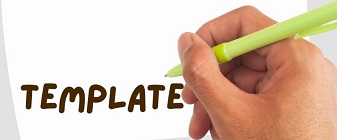Marketing Strategy of Madilog Coffee Shop using Influencers through Instagram Social Media
(1) Management Science Program, Faculty of Economic and Business, Universitas Alma Ata
(*) Corresponding Author
DOI: https://doi.org/10.26858/ja.v7i1.14664
Abstract
Marketing Strategy of Madilog Coffee Shop using Influencers through Instagram Social Media (Case Study at Madilog Coffee Shop). This type of research uses a qualitative research design. The number of informants in this study amounted to 4 people (1 Owner and 3 Visitors). Samples will be obtained by using a purposive sampling technique. Data collection techniques can be done by way of interviews (interviews), and observations (observations), and a combination of the three, directly from respondents selected as a sample, which includes data on the identity of respondents. Based on the results obtained using qualitative analysis, it can be concluded in this study that the reason why the marketing strategy of Madilog Coffee Shop Marketing Using Influencers Through Instagram Social Media switches from conventional ways to Instagram marketing, namely, first because of technological advances using mobile phones, consumers are more often using Instagram social media, secondly by using social media marketing especially Instagram can further reduce marketing costs, Thirdly by utilizing influencers to increase marketing on Instagram, and have a positive impact on the progress of Madilog Coffee Shop using Influencers through Instagram Social Media, finally the role of place variables / place in the marketing mix can make Madilog Coffee Shop Marketing Strategies use Influencers through Instagram Social Media to come back to Madilog Coffee Shop Marketing Strategies using This Influencer Through Social Media Instagram gives and places an attractive place for consumers and the price is also in accordance with the prices of students. The place according to the researchers is less strategic but with advances in technology and promotion strategies that Madilog Coffee Shop.
Keywords
Full Text:
PDFReferences
Brinkman, C. S., Gabriel, S., & Paravati, E. (2020). Social achievement goals and social media. Computers in Human Behavior, 111, 106427. https://doi.org/https://doi.org/10.1016/j.chb.2020.106427
Brown, Z., & Tiggemann, M. (2020). A picture is worth a thousand words: The effect of viewing celebrity Instagram images with disclaimer and body positive captions on women’s body image. Body Image, 33, 190–198. https://doi.org/https://doi.org/10.1016/j.bodyim.2020.03.003
Cheng, C. C. J., & Shiu, E. C. (2020). What makes social media-based supplier network involvement more effective for new product performance? The role of network structure. Journal of Business Research, 118, 299–310. https://doi.org/https://doi.org/10.1016/j.jbusres.2020.06.054
Engeln, R., Loach, R., Imundo, M. N., & Zola, A. (2020). Compared to Facebook, Instagram use causes more appearance comparison and lower body satisfaction in college women. Body Image, 34, 38–45. https://doi.org/https://doi.org/10.1016/j.bodyim.2020.04.007
Huerta-Álvarez, R., Cambra-Fierro, J. J., & Fuentes-Blasco, M. (2020). The interplay between social media communication, brand equity and brand engagement in tourist destinations: An analysis in an emerging economy. Journal of Destination Marketing & Management, 16, 100413. https://doi.org/https://doi.org/10.1016/j.jdmm.2020.100413
Jiao, P., Veiga, A., & Walther, A. (2020). Social media, news media and the stock market. Journal of Economic Behavior & Organization, 176, 63–90. https://doi.org/https://doi.org/10.1016/j.jebo.2020.03.002
Kaplan, A. M., & Haenlein, M. (2010). Users of the world, unite! The challenges and opportunities of Social Media. Business Horizons. https://doi.org/10.1016/j.bushor.2009.09.003
Kietzmann, J. H., Hermkens, K., McCarthy, I. P., & Silvestre, B. S. (2011). Social media? Get serious! Understanding the functional building blocks of social media. Business Horizons. https://doi.org/10.1016/j.bushor.2011.01.005
Liu, W., Xu, W. (Wayne), & Tsai, J.-Y. (Jenny). (2020). Developing a multi-level organization-public dialogic communication framework to assess social media-mediated disaster communication and engagement outcomes. Public Relations Review, 46(4), 101949. https://doi.org/https://doi.org/10.1016/j.pubrev.2020.101949
Liu, Y., & Bakici, T. (2019). Enterprise social media usage: The motives and the moderating role of public social media experience. Computers in Human Behavior, 101, 163–172. https://doi.org/https://doi.org/10.1016/j.chb.2019.07.029
Nofiana, L., & Sunarsi, D. (2020). The Influence of Inventory Round Ratio and Activities Round Ratio of Profitability (ROI). JASa (Jurnal Akuntansi, Audit Dan Sistem Informasi Akuntansi), 4(1), 95–103.
Parmelee, J. H., & Roman, N. (2020). Insta-echoes: Selective exposure and selective avoidance on Instagram. Telematics and Informatics, 52, 101432. https://doi.org/https://doi.org/10.1016/j.tele.2020.101432
Roldán-Álvarez, D., Bacelo, A., Martín, E., & Haya, P. A. (2020). Impact of different interaction protocols on group communication, satisfaction and learning outcomes of primary school children when using multitouch tabletops. Computers & Education, 152, 103875. https://doi.org/https://doi.org/10.1016/j.compedu.2020.103875
Ruben, D. H. (2020). Chapter 14 - Effective communication of psychological evaluation findings for the court (D. H. B. T.-B. F. Ruben (ed.); pp. 265–289). Academic Press. https://doi.org/https://doi.org/10.1016/B978-0-12-819805-6.00014-2
Sakuliampaiboon, C., Songkhla, J. N., & Sujiva, S. (2015). Strategies of Information Communication and Technology Integration by Benchmarking for Primary School in Catholic (Layman) School Administration Club Bangkok Arch Diocese for Students’ 21st Century Skill. Procedia - Social and Behavioral Sciences, 174, 1026–1030. https://doi.org/https://doi.org/10.1016/j.sbspro.2015.01.789
Son, J., Lee, H. K., Jin, S., & Lee, J. (2019). Content features of tweets for effective communication during disasters: A media synchronicity theory perspective. International Journal of Information Management, 45, 56–68. https://doi.org/https://doi.org/10.1016/j.ijinfomgt.2018.10.012
Sunarsi, D. (2018a). Buku Ajar: Seminar Perencanaan Sumber Daya Manusia. Asmoro Mediatama.
Sunarsi, D. (2018b). Pengaruh rekrutmen, seleksi dan pelatihan terhadap produktivitas kerja karyawan. KREATIF: Jurnal Ilmiah Prodi Manajemen Universitas Pamulang, 6(1), 14–31.
Todisco, L., Tomo, A., Canonico, P., Mangia, G., & Sarnacchiaro, P. (2020). Exploring social media usage in the public sector: Public employees’ perceptions of ICT’s usefulness in delivering value added. Socio-Economic Planning Sciences, 100858. https://doi.org/https://doi.org/10.1016/j.seps.2020.100858
Widyaningrum, D. E. (2012). Strategi Pemasaran Kampung Batik Laweyan Solo. Jurnal Manajemen Pemasaran Universitas Indonesia.
Yuangga, K. D., & Sunarsi, D. (2018). The Influence of Procrastination and Low Time Management on Student Self Efficacy (at MA Soebono Mantofani). PINISI Discretion Review, 2(1), 85–92.
Article Metrics
Abstract view : 1609 times | PDF view : 440 timesRefbacks
- There are currently no refbacks.
Copyright (c) 2020 Dimas Wibisono

This work is licensed under a Creative Commons Attribution-NonCommercial-NoDerivatives 4.0 International License.






























 under a
under a